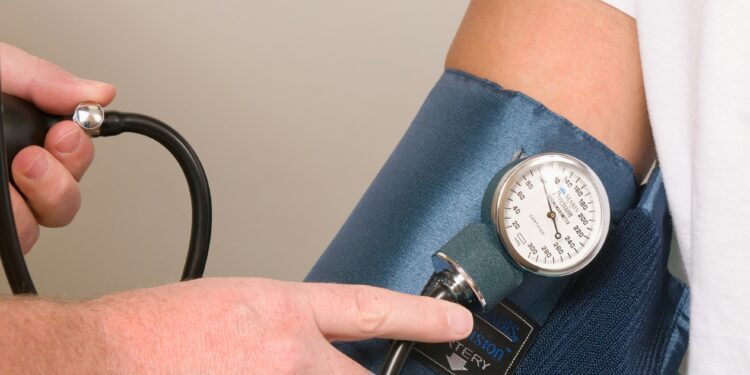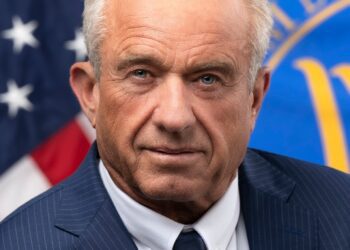When a Hashtag Can Save a Life
Blood pressure doesn’t trend—until it does.
On May 17, 2025, as World Hypertension Day turned 20, the humble call to “Measure, Control, Live Longer” unexpectedly became one of the most shared global health messages of the month. Social media platforms saw a threefold increase in posts bearing the #WorldHypertensionDay hashtag compared to the week prior. The World Health Organization (WHO), flanked by cardiology societies, digital health influencers, and patient advocacy groups, orchestrated a campaign that was as data-driven as it was emotionally resonant.
And in a year already overburdened by health misinformation, economic strain, and post-pandemic fatigue, this message cut through with rare clarity: know your numbers—or risk never knowing what killed you.
A Global Milestone for a Global Crisis
World Hypertension Day was first observed in 2005, spearheaded by the World Hypertension League (WHL) as part of a global effort to reduce cardiovascular mortality. Its 2025 theme, “Measure Your Blood Pressure Accurately, Control It, Live Longer,” is both a slogan and a public health imperative. Nearly 1.28 billion adults globally suffer from hypertension, but only 42% are diagnosed and treated, according to the WHO’s latest global hypertension report.
This year’s campaign coincides with a troubling milestone: cardiovascular diseases now account for nearly one-third of all global deaths, with high blood pressure as the leading modifiable risk factor. Yet hypertension remains a paradox in the modern medical landscape—ubiquitous but ignored, deadly but preventable.
Dr. Ananya Mehta, a cardiologist affiliated with the Global Burden of Disease Project, put it plainly:
“We have advanced tools to measure, treat, and even reverse high blood pressure, yet millions die every year without ever being diagnosed.”
From Clinics to Algorithms: WHO’s 2025 Strategy
What made this year’s World Hypertension Day different was its scale and digital coordination. The WHO, alongside organizations like the International Society of Hypertension (ISH) and Resolve to Save Lives, rolled out a multi-platform strategy that blended grassroots screening efforts with targeted online campaigns.
A centerpiece of the initiative was the Blood Pressure Measurement Accuracy certification toolkit, launched in partnership with PAHO, to train healthcare workers in low- and middle-income countries. Studies show that inaccurate measurements—due to poor technique or faulty equipment—contribute to both underdiagnosis and overtreatment, making accuracy not just technical but ethical.
Meanwhile, Instagram stories featuring cardiologists and digital health creators like Dr. Yazdan Khadim (with over 1M followers) taught users how to take their blood pressure at home, explaining the differences between white coat hypertension and masked hypertension, which continues to plague even well-resourced healthcare systems.
The Quiet Transformation of Public Health Messaging
There was a time when public health campaigns relied on billboards and public service announcements. In 2025, hashtags, reels, and infographics are the new vanguards of epidemiological literacy.
And it’s working.
This year’s #WorldHypertensionDay campaign generated over 18 million impressions on Twitter/X and TikTok combined, according to analytics from Symplur, a healthcare social media data platform. Cardiologists began hosting live Q&As, influencers wore blood pressure cuffs like fashion statements, and telemedicine apps such as Qardio and Omron Connect reported a 12% spike in downloads.
“It’s no longer about simply raising awareness,” said Dr. Saeed Barghouti, a public health digital strategist. “It’s about activating micro-decisions—nudging people to check their pressure during lunch breaks, text their parents about their readings, or buy validated devices.”
The Data Gap: Why Hypertension Is Still Misunderstood
Despite the surge in awareness, hypertension continues to be misunderstood, particularly in the West where it is often framed as a lifestyle disease, burdening patients with stigma rather than empowering them with science.
But data shows the reality is more complex. The Lancet’s 2021 hypertension commission highlights how structural inequalities—including food deserts, environmental stressors, and lack of access to preventive care—exacerbate high blood pressure, particularly among communities of color and low-income populations.
“Hypertension is not just a matter of too much salt,” argues Dr. Michelle Chang, author of Hypertension and the American Divide. “It is a social and political diagnosis, woven into housing policy, school lunches, and job security.”
That framing—of hypertension as both a biological and societal condition—has gained traction in 2025, and is subtly embedded in the campaign’s tagline: Measure, Control, Live Longer. The imperative to “measure” is not just about the sphygmomanometer; it’s about measuring equity, access, and accountability.
Tech Meets Triage: Digital Tools to Combat a Global Epidemic
The technological renaissance of hypertension management has been quietly brewing for years, but World Hypertension Day 2025 brought it to the forefront.
Startups like Hello Heart, Omada Health, and Livongo now offer AI-driven monitoring platforms that track blood pressure fluctuations and provide real-time alerts. Wearables, once focused on steps and sleep, now integrate cuffless BP sensors, a feature pioneered by companies like Aktiia and Valencell.
In low-resource settings, NGOs distributed solar-powered BP monitors and mobile kiosks to rural areas in Sub-Saharan Africa and Southeast Asia. Meanwhile, partnerships with companies like Zipline enabled drone delivery of hypertension medications in remote communities.
Perhaps most telling was the WHO’s announcement of an upcoming Global Hypertension Data Dashboard, which will compile anonymized readings submitted by partner countries to track prevalence and treatment efficacy in real time.
What’s Next: From Annual Awareness to Continuous Accountability
There is a growing consensus among public health leaders that annual awareness days are only effective when embedded within a larger continuum of care. Awareness without access is performative. Screening without follow-up is negligent.
“Checking your blood pressure once a year isn’t enough,” said Dr. Barghouti. “We need chronic engagement for a chronic disease.”
That means:
- Integrating BP screenings into every primary care visit, not just cardiology checkups
- Ensuring insurance coverage for home monitoring devices
- Building community health infrastructures to follow up on elevated readings
- Continuing to leverage digital platforms to dismantle stigma and promote evidence-based interventions
The Final Word: Numbers That Matter
Hypertension will likely never dominate headlines the way pandemics or cancer breakthroughs do. It is not dramatic. It is not new. But it remains the most preventable cause of premature death worldwide, responsible for nearly 10 million deaths annually, according to WHO data.
That makes campaigns like World Hypertension Day not just important—but vital.
In a world of rising noise and shrinking attention spans, the act of measuring your blood pressure becomes an act of defiance, of knowledge, of life. Because knowing your numbers isn’t just medical—it’s existential.















